Perennial
Before considering each type of climbing plants separately, you should understand the selection parameters. To make the hedge pleasing to the eye, select young plants taking into account the climate, humidity, illumination, soil composition - these are the most important parameters that guarantee you the most optimal selection.
An important nuance is the fence itself. Thin and flimsy will not withstand heavy large vines. Self-clinging plants will not be able to curl on brick - you will have to make garters.
Advice! Do not plant several different species close to each other. Ivy and hops are especially worth wary of - they will simply survive ornamental and more demanding neighbors.
Ivy
This climbing plant does not matter where it grows, so it is often used in landscape design. Garden ivy survives both in hot sun and cool shade. At the same time, it grows and becomes a beautiful hedge in just a couple of months.
The plant is perennial, you will have to tinker only in the first year - the older the ivy becomes, the less attention it requires. From the second year, the main task of the gardener will be regular watering and pruning 2-3 times per season.
The photo shows an example of ivy growth
Hop
An excellent choice for those who do not like to take care of plants, but want to decorate the garden with climbing plants for a fence. Large juicy leaves, fast growth, beautiful encirclement of the fence - this is guaranteed with hops. In July-August, the plant blooms profusely, fragrant light cones form after the peduncle.
Important! Keep in mind that getting rid of these two plants (hops, ivy) is incredibly difficult: digging or pulling is not enough, most likely new shoots will appear from the ground for several more years.
Clematis
If you like abundant flowering, then this climbing plant is perfect. However, in comparison with the first two options, clematis is whimsical to climatic conditions.
He does not like shade, cold and dampness - it is optimal to plant on the sunny side, water rarely, but abundantly, spraying also foliage and flowers. But do not overdo it: the reflecting sun from the corrugated board, for example, creates a real oven and clematis can die.
It belongs to fast-growing perennial plants, the flowering period of an adult can last from spring to late autumn.
Wild grapes
It is also called Amur grapes, maiden grapes, ornamental. Unlike fertile varieties, this one is unpretentious in care, to the planting site, does not require regular feeding. They are planted immediately in open ground, the soil is suitable both nutritious and sandy. In the first year after planting, the shoots are directed, tied.
The length of the vines of the maiden grapes reaches 20 meters, so if you do not want the hedge to subsequently creep over the entire site, cut young shoots in time and form a crown.Although it does not bloom, the leaves themselves will change during the season, giving a decorative look to the entire structure: a juicy lime shade in early spring, green in summer, purple, purple, dark green in late summer and autumn.
In the photo there are red leaves of autumn grapes
Important! All of these plants are planted far from the beds with cultivated varieties - the powerful root system of the above survives even weeds, not to mention the selective "tender" seedlings.
Annuals
Not all climbing plants successfully tolerate frost. If you live in a harsh climate, choose the role of climbing plants for the fence - fast-growing annuals.
Sweet pea
It will help to refine the fence and decorate decorative partitions, but it should be borne in mind that it reaches a height of only 2-3 meters. It grows in all conditions, except for wetlands. After planting, the plant requires regular rationed watering, high-quality feeding and special supports - otherwise it will simply crawl along the ground, occupying an area horizontally.
There are many varieties of sweet peas - they differ mainly in the color and aroma of the buds.
In the photo weaving curly peas by shoots
Ornamental beans
Light and heat-loving climbing plant for the fence. Beans are distinguished by decorative juicy greens, for which they fell in love with gardeners. It does not need special care, but nitrogen fertilizers can be used for more lush growth and abundant landscaping.
Consider also her love of watering: the hotter it is outside the window, the more often the hedges are watered, up to the daily repetition.
Advice! The fruits of ornamental beans can be harvested and even eaten - to make them more, the shoots are regularly pinched.
Morning glory
Beautiful and dangerous because it is poisonous. Therefore, on a site with children or animals, it is better to refuse it altogether. If you nevertheless included it in the landscape design project and planted it along the fence - handle it carefully, carry out the garter and trimming with gloves.
Morning glory loves the sun, moderately moist soil. Flowers can be of any color, about 6-8 cm in size. To make the plant feel good, exclude waterlogging and overdrying - make sure that the soil always remains slightly moist.
Ipomoea flower in the photo
Winter hardy
Evergreen climbing perennials from the first section survive even harsh winters without loss, but there are other options.
Honeysuckle
Ornamental species such as honeysuckle curl beautifully and bloom profusely throughout the season. But they have a drawback: the berries of these varieties (unlike shrubs) cannot be eaten, they are poisonous - therefore, you should not plant on an area where children can reach the fruits. Adult plants tolerate frosts without any problems, they are not even removed from their supports. Young ones (up to 2-3 years old) are best removed and covered at the end of the season.
Honeysuckle loves moist soil, so it is better to mulch the surface after planting to retain moisture. It grows best in the sun, the darker, the slower it will develop and less bloom.
Woodlip
As the name implies, this vine has more than enough strength and desire to live: without control, it will quickly survive other plants from the site and occupy the territory. But with timely pruning, a hedge, even on the basis of a picket fence or a chain-link mesh, looks very decorative.
The tree-nose is going through the winter without any special losses, you should not worry even if some of the processes freeze. Thanks to its powerful root system, it will quickly recover with the arrival of heat.
In the photo, a tree-nose plier wrapping around an arch
Chinese lemongrass
This hedge has nothing to do with citrus, the name was given solely because of the pleasant aroma of the fruit. Lemongrass takes root and hibernates even in the Siberian and Far Eastern territories, not to mention the mild winters of the central part of Russia.The only thing to consider is that it does not like the sun, but it is ideal for decorating the shaded side of the fence.
Important! Lemongrass stems are dried and brewed like tea - this drink has a revitalizing, energizing effect. Increases blood pressure, can even replace coffee.
Unpretentious
Of those already listed, the unpretentious ones include: hops, ivy, grapes, woodworm, clematis.
Campsis
Large bright flowers and pointed, dense leaves make this species ideal for creating lively compositions. Refers to both sun- and shade-loving plants: in fact, there is no difference for Kampsis where to grow. The roots are powerful, keep this in mind for monolithic fences - overgrown kampsis can damage even brickwork. It begins to bloom from 2-3 years old, it does it abundantly and for a long time - from about July to October.
In the photo, the flowering of kamsis
Plants with flowers
Climbing rose
Suitable for experienced flower growers and those who are ready to care for this complex plant. Thorny shoots with flowers require careful handling, timely garter. But if you do everything right, during the flowering period, the site will turn into a real imperial garden. It can hibernate, but in the fall they wrap and cover. Although even such a scenario does not guarantee a successful wintering for a climbing rose.
In the photo, a profusely blooming rose
Important! Climbing roses are more susceptible to attack by aphids and spider mites than others. Carefully monitor the health of the seedling, timely measures taken when pests are detected will save the life of the plant.
Kobei
In fact, the plant itself is perennial and in the southern regions it successfully blooms for more than one year after planting. But it cannot be classified as winter-hardy, so in most of Russia it is grown as an annual - it grows quickly, blooms in the first year, and is suitable for decoration.
The leaves are large enough, beautiful, but they love the kobei not for them, but for the charming bell-shaped flowers. Tying is not needed, the vine releases antennae and grabs the support with them, independently rising up. Loves sunlight, can develop in partial shade, but not in dark areas.
The photo shows an example of a kobei garter
Nasturtium
Let the sun enter your summer cottage: plant the original nasturtium! Additional lashes and garters will be required near the fence, along which the plant can curl upward. To make the flowering juicy and long-lasting, plant it in a bright place - both open ground and tubs or boxes are suitable. The flowers are large, bright - orange, yellow, red. Less common are white or pastel shades.
Wisteria
The most beautiful design option for fences, arches, arbors. Large clusters of flowers in a fresh purple hue, combined with green foliage, give a charming look to even the simplest buildings. Wild varieties prefer the hot climate of the subtropics, but breeders have bred species that can survive a cold snap to -37C. Are you going to grow wisteria on the site? Look for the varieties that best suit your climate.
Evergreen
Periwinkle
There are deciduous and year-round green varieties - of course, given the rather mild climate. But even in northern latitudes, periwinkle wakes up in early spring and already in April pleases with its vegetation, continues to grow rapidly in the summer season.
It grows quickly, grabs the surface and braids it on its own - you just have to follow the shape. Will easily tolerate missed watering or hitting frost. A thick long crown protects the area from dust, dirt, and prying eyes.
Bougainvillea
In warm countries, it not only retains green leaves all year round, but also blooms profusely. Although it looks more like a bush or tree, it is often used around hedges and house facades. The branches spread vertically, decorating any surface with large clusters of flowers and foliage.The flowers are multi-colored, mostly pink, purple, lilac, violet. Grows in hot climates, on the sunny side.
Photo gallery
Breeders have developed a huge number of plant varieties suitable for certain climatic conditions. If you want a specific species, look for one that will definitely survive on your site.

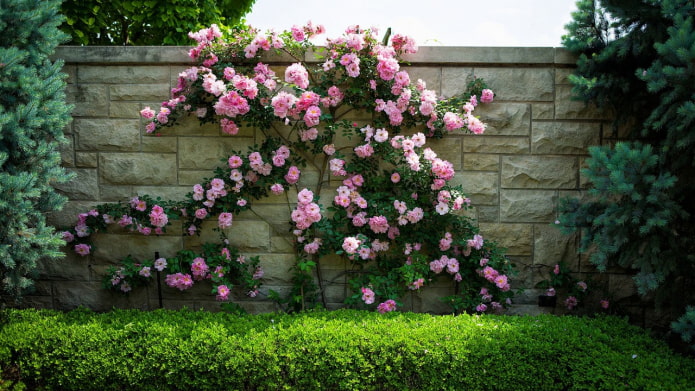
 10 practical tips for arranging a small kitchen in the country
10 practical tips for arranging a small kitchen in the country
 12 simple ideas for a small garden that will make it visually spacious
12 simple ideas for a small garden that will make it visually spacious
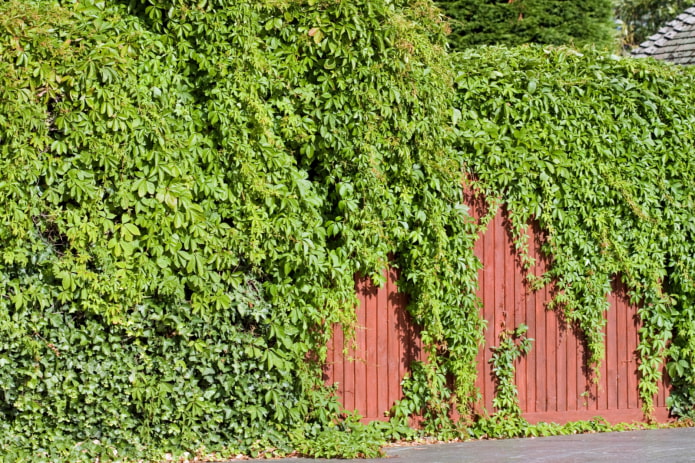


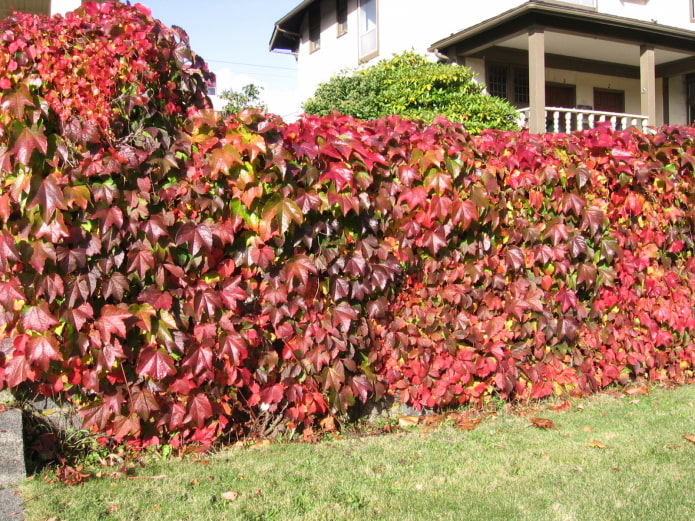
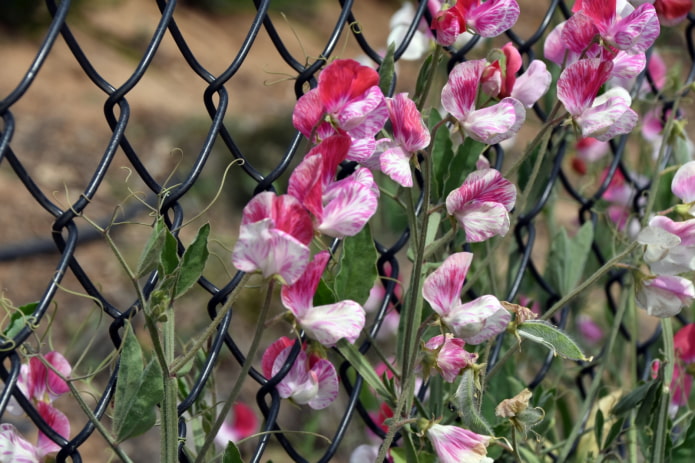
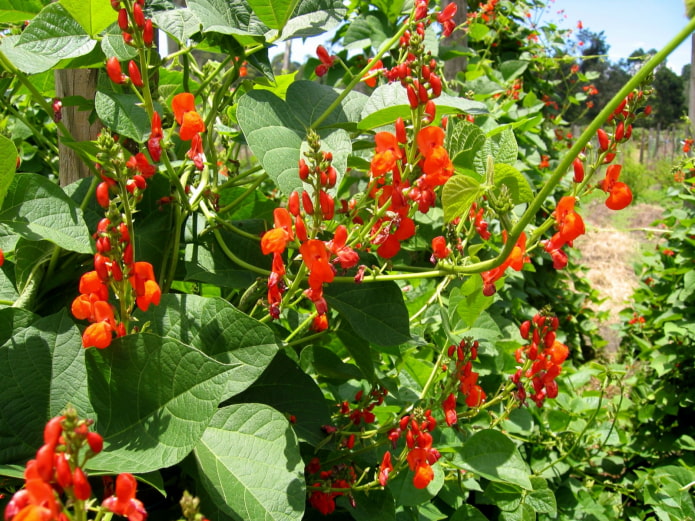

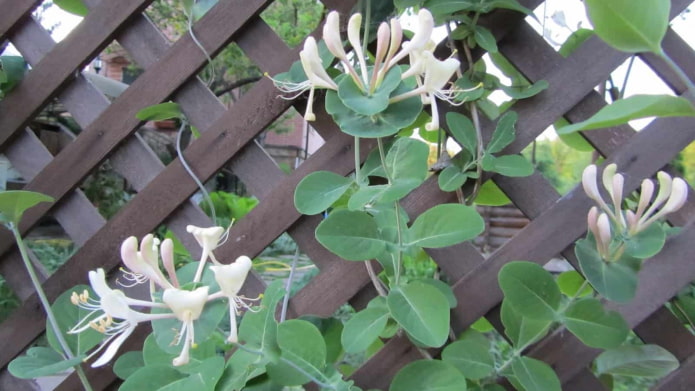
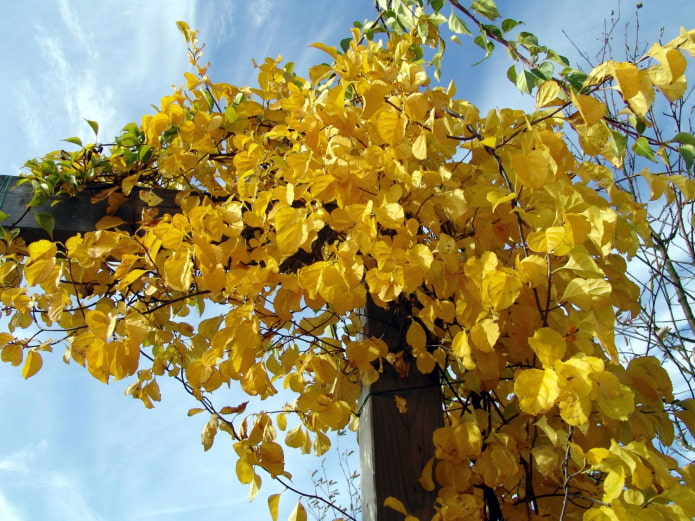
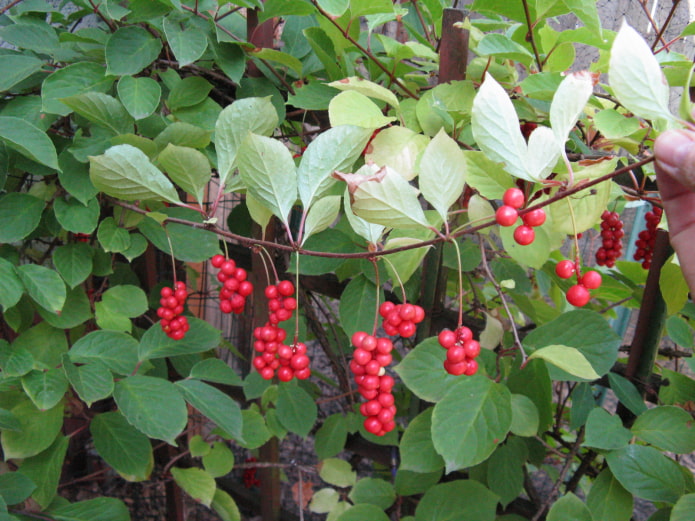
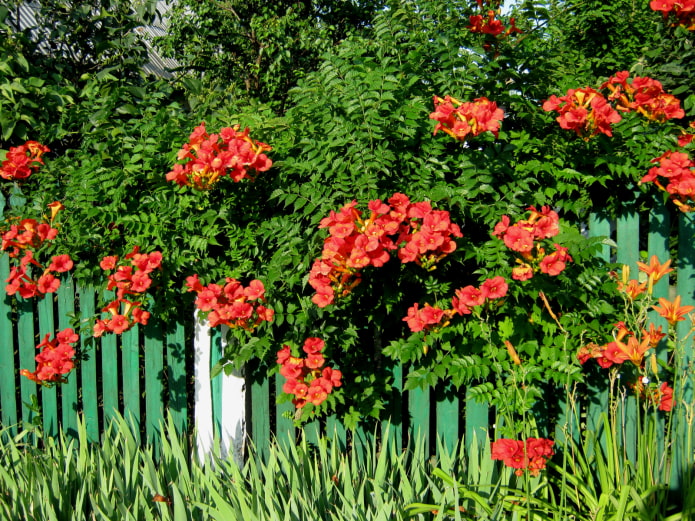
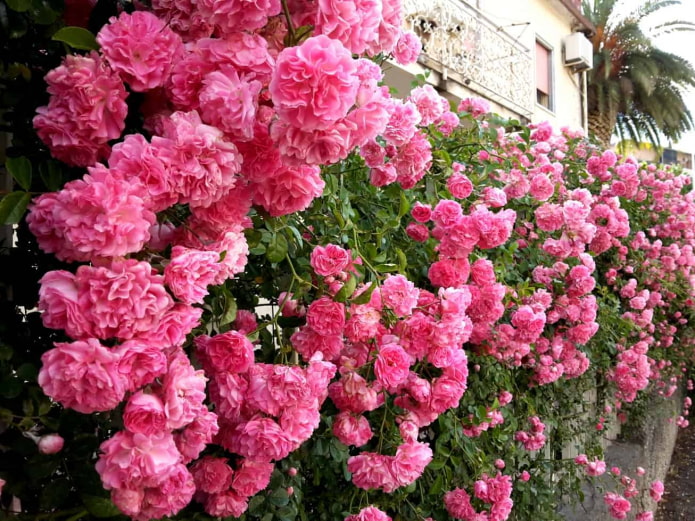

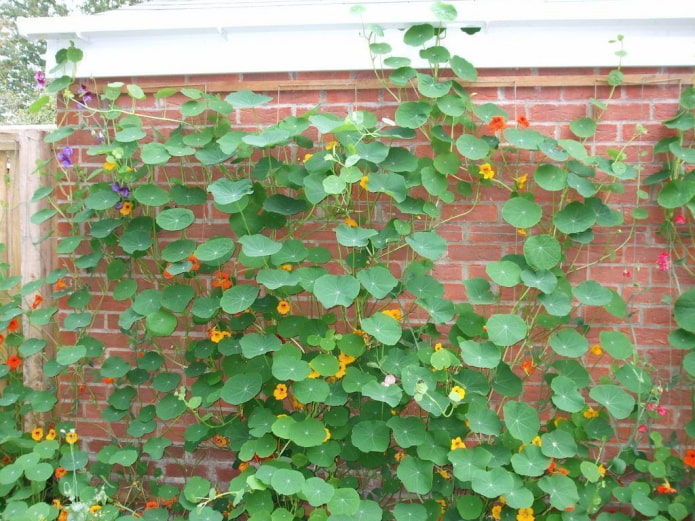

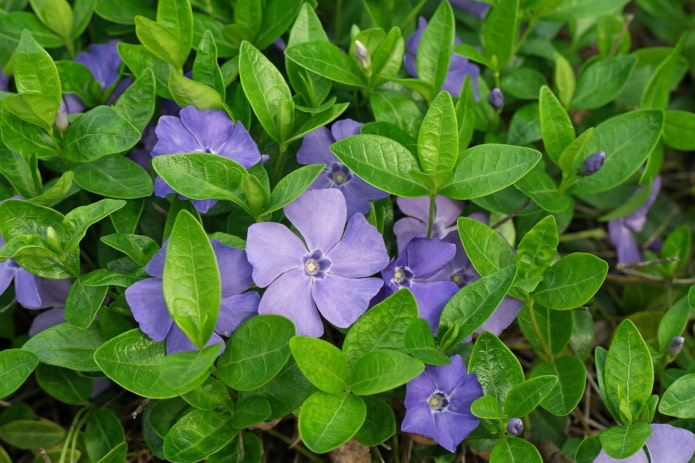
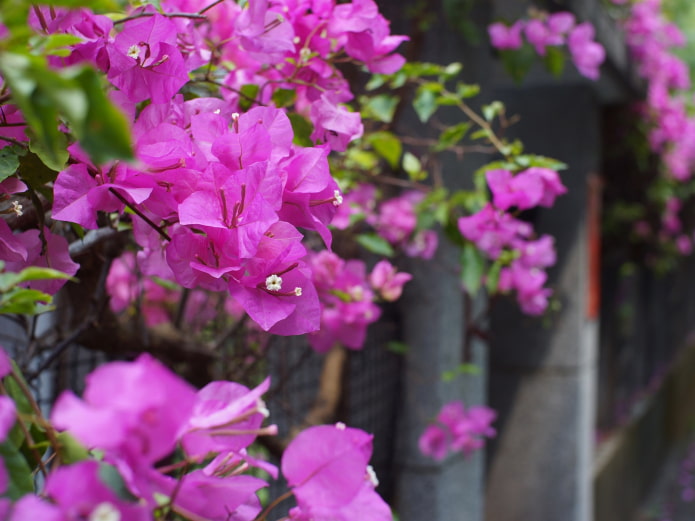
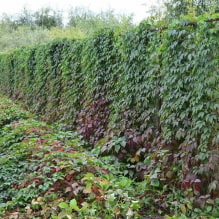
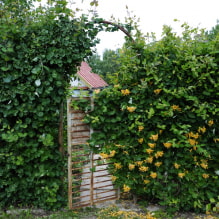
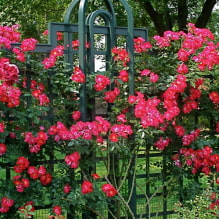
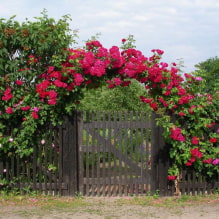
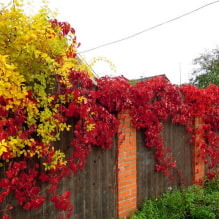
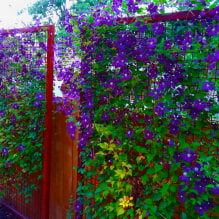
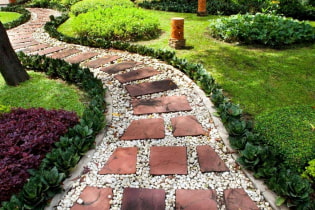 How to decorate garden paths beautifully for a summer residence?
How to decorate garden paths beautifully for a summer residence?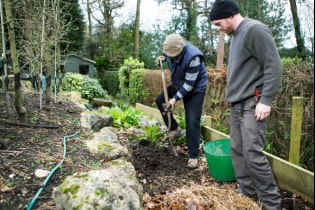 What fertilizers should be used in spring?
What fertilizers should be used in spring? How to use gabions on the site?
How to use gabions on the site?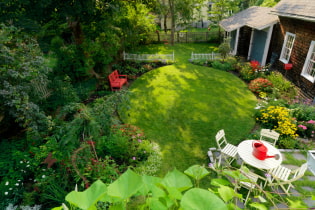 Landscaping of a summer cottage on 6 acres
Landscaping of a summer cottage on 6 acres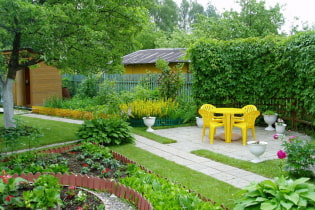 How to arrange the landscape design of a suburban area of 4 ares?
How to arrange the landscape design of a suburban area of 4 ares?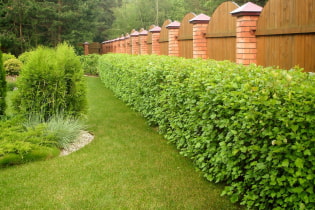 What plants can you make a hedge?
What plants can you make a hedge?